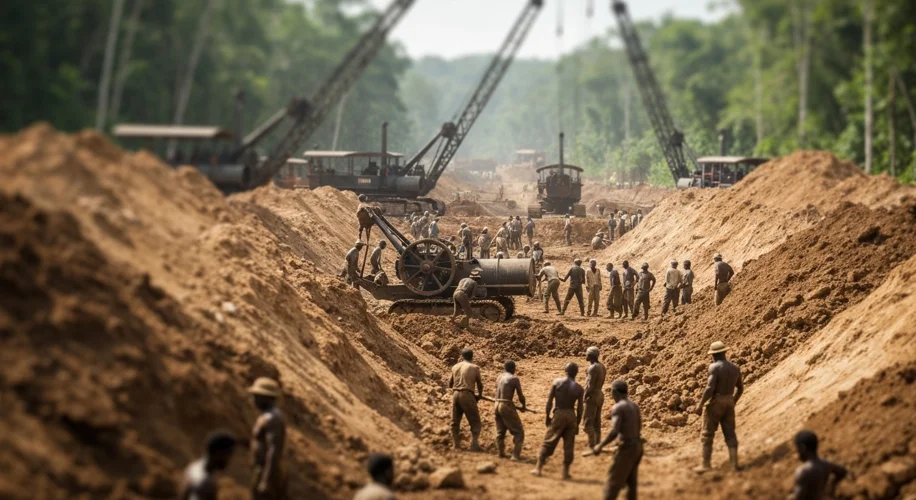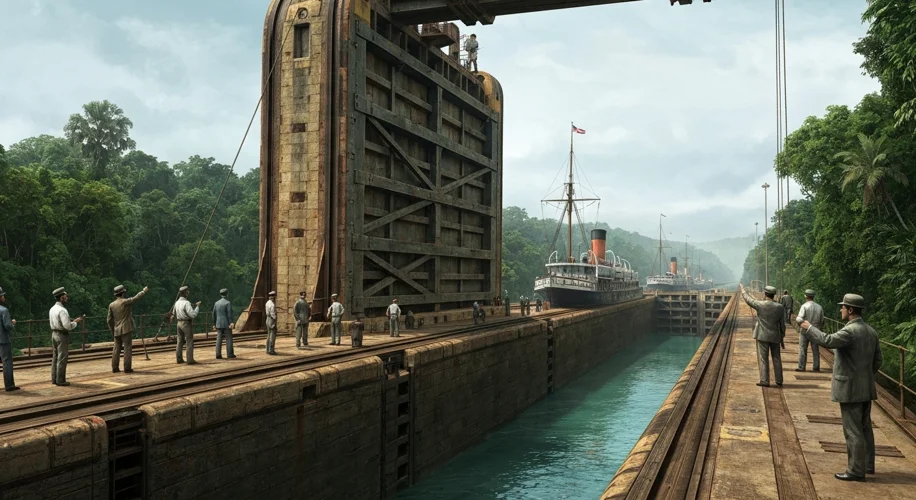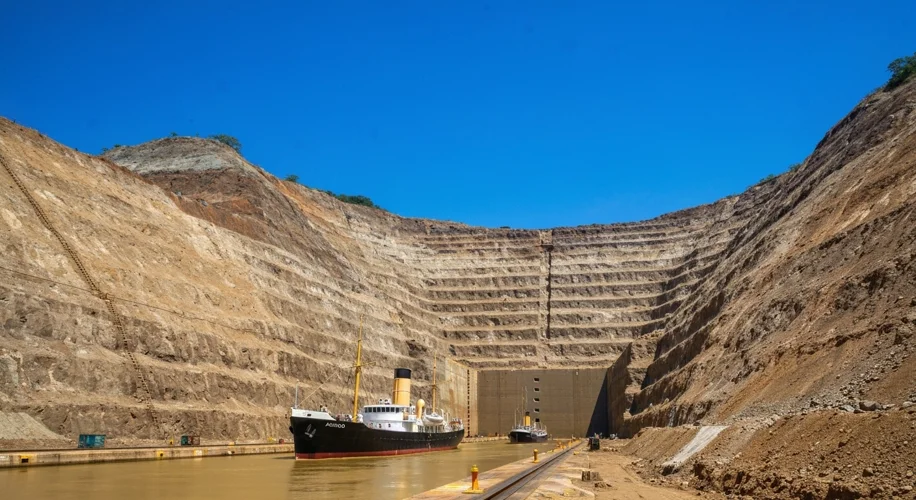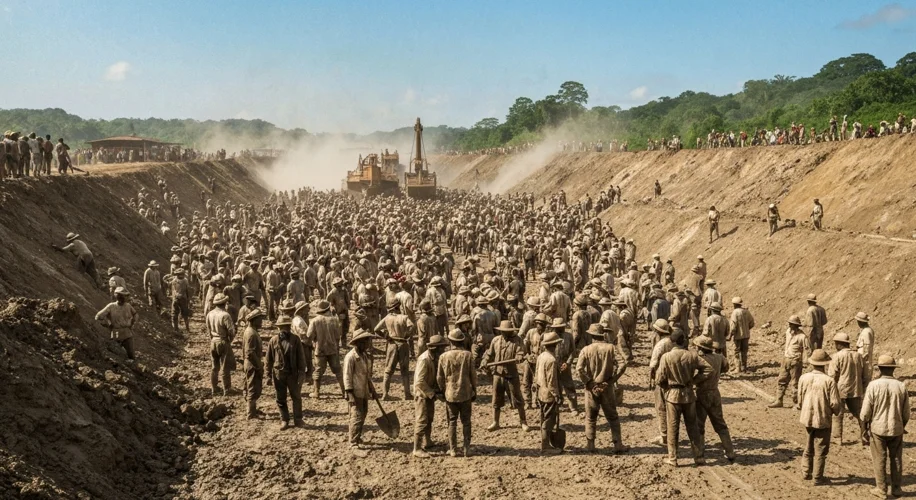In the sweltering, unforgiving jungles of Panama, a dream as audacious as it was monumental was slowly, agonizingly, taking shape. It was the early 20th century, and the world watched, a mixture of awe and apprehension, as the United States embarked on a colossal endeavor: to cleave a passage through the very backbone of the Americas, connecting the vast Atlantic and Pacific oceans. This was the Panama Canal, a feat of engineering that would redefine global trade and travel, but one that was etched in sweat, blood, and a relentless battle against nature itself.
The story of the Panama Canal is not merely one of concrete and steam shovels; it is a saga of human ambition, political maneuvering, and a stark confrontation with the microscopic. The French, under Ferdinand de Lesseps, the visionary behind the Suez Canal, had made the first attempt in 1881. They envisioned a sea-level canal, a grander, more direct route. But Panama, with its dense rainforest, torrential rains, and the crushing humidity, proved to be a far more formidable adversary than the deserts of Egypt. The real killer, however, was unseen: the mosquito. Malaria and yellow fever raged through the French camps, felling thousands. Their efforts dissolved into a specter of disease and financial ruin, leaving behind a graveyard of machinery and broken dreams.
Into this void stepped the United States. Driven by a desire for a faster naval route and immense economic benefits, President Theodore Roosevelt was determined to finish what the French had started. But the path to realization was fraught with political complexity. Panama, at the time, was a province of Colombia. Negotiations for the right to build the canal stalled, leading to a controversial U.S.-backed Panamanian revolution in 1903. The newly independent Panama quickly granted the U.S. control over a ten-mile-wide Canal Zone, a sovereign nation within a nation, for the construction and operation of the canal.
With the political landscape cleared, the Herculean task of construction began in earnest in 1904. The American chief engineer, John Frank Stevens, initially abandoned the French sea-level concept, recognizing the immense difficulties. Instead, he championed a lock-and-lake system, a more practical approach that would involve damming the Chagres River to create Gatun Lake, the largest artificial lake in the world at the time, and then using a series of locks to raise and lower ships between the lake and sea level. This was a stroke of genius, but it demanded an army of workers and an engineering prowess that pushed the boundaries of what was thought possible.

The human cost was staggering. Over 75,000 men, many of them from the West Indies, toiled under the brutal Panamanian sun. They faced the same deadly diseases that had plagued the French, but this time, the Americans were better prepared. Under the direction of Dr. William C. Gorgas, a massive sanitation campaign was launched. Swamps were drained, mosquito breeding grounds were fumigated, and buildings were screened. This relentless war on the mosquito, though controversial at the time, was the key to overcoming the epidemic that had doomed the French effort. Yet, even with these measures, thousands perished. The sheer scale of excavation was almost incomprehensible; over 250 million cubic yards of earth were moved, enough to bury Manhattan Island under 15 feet of dirt.

The construction was a symphony of machinery and human effort. Giant steam shovels, some capable of excavating 15 tons of earth in a single bite, worked alongside thousands of laborers wielding picks and shovels. The Culebra Cut, a massive trench carved through the continental divide, was a particularly treacherous section. Landslides were frequent and devastating, swallowing machinery and men alike. The immense Gatun Dam, built across the Chagres River, created Gatun Lake, a crucial element of the lock system, and was, at the time, the largest earth dam in existence.
Finally, on August 15, 1914, the SS Ancon made the first official transit of the Panama Canal. The world had a new shortcut, a marvel of human ingenuity that slashed travel times and reshaped the arteries of global commerce. Ships that once took months to circumnavigate South America could now cross in a matter of hours. The economic impact was immediate and profound, facilitating trade and connecting distant markets. For the United States, it solidified its growing influence on the world stage and marked a significant triumph in its engineering capabilities.

The construction of the Panama Canal was more than just an engineering feat; it was a testament to human resilience, scientific advancement, and the complex interplay of geopolitics and ambition. It stands as a powerful reminder of the challenges overcome, the lives lost, and the enduring impact of human determination to conquer geographical barriers, forever altering the course of global history. The ‘Great Ditch,’ as it was often called, was a brutal, beautiful, and ultimately triumphant chapter in the story of human progress.

